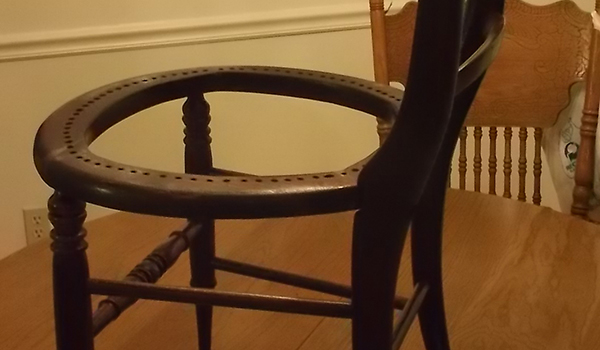
I am a permanently disabled veteran so I can not have an income, so I repair antique wood furniture for fun. I have been doing this for more than 40 years. I do the repair for only the materials that I use. Many time people bring me things that, to them, seem unrepairable. In this case, a lady brought me an antique wicker chair that a cleaning lady had stood in and it collapsed. She brought it to me in a box in the trunk of her car. I told her that I could work on the wood but that I was not experienced in wicker, but I gave her the contact information of a guy who had a good reputation that was in the upholstery business. I took it one set at a time and reassembled it one piece at a time.
There are a number of steps of restoring any antique and many variations of those steps. First and foremost is to analyze the project by getting a note pad and pencil.
– Take detail notes about what needs to be done. It helps when you are finished to cut the lines apart and rearrange them in the order that you will use them. Then rewrite the list including things like things that you will need. For example the color of stain, type of varnish, amount and type of sand paper.
– Next, before you disassemble anything take pictures especially of any items that are damages and you will need to disassemble. Make any notes on specialty hardware such as the length and type of screws. I also clean the piece with Amish wood milk (Available at Walmart online). This product takes all of the dirt, grease and wax, but does not hurt varnish. Many times I find that all a piece of furniture needs is a good cleaning. This product even removes some of the white rings. All that the white ring is is moisture trapped under the finish. It removes the dirt, grease and wax that has built up from years of use and cleaning. It does not hurt the original finish.
– Make a shopping list. Making sure that you have enough glue, stain, varnish, and any special hardware that you do not have or want to change during reassembly.
– Get a magnetic dish to hold all of the screws or a plastic container with a lid. This helps if you get several projects going on at the same time to prevent mixing up the hardware.
– Make a list of the order of disassembly to prevent removing unnecessary items. It helps during reassembly if you take pictures during this process. It also helps if you have a strong knowledge of the bases of all your products. For example, Elmer’s glue is water based and while wet can be cleaned up with soap and water. While Gorilla glue is a epoxy glue that foams when it gets wet. In fact, the instructions invite you to moisten both pieces before applying the glue. Once applied and clamped, I do not attempt to do anything else with the glue until it dries. Then, I will cut the excess with a knife or chisel then as a last step I use a sander.
– After I have disassembled the entire piece and sanded any piece that needs touchup, I will stain most pieces before any glue is applied. The reason for this is that stain is oil based and glue is water based and the two do not mix.
– I make a sheet on the color and type of stain for future use. If you have to have to deviate from the normal standard colors, then put a piece of masking tape on the top or side with the formula. It is best to make sure that you have enough stain at the beginning for the entire project, because duplicating the formula with exact results is unlikely.
-Larry Potts
Mount Holly, NC
See the Gallery Below:










